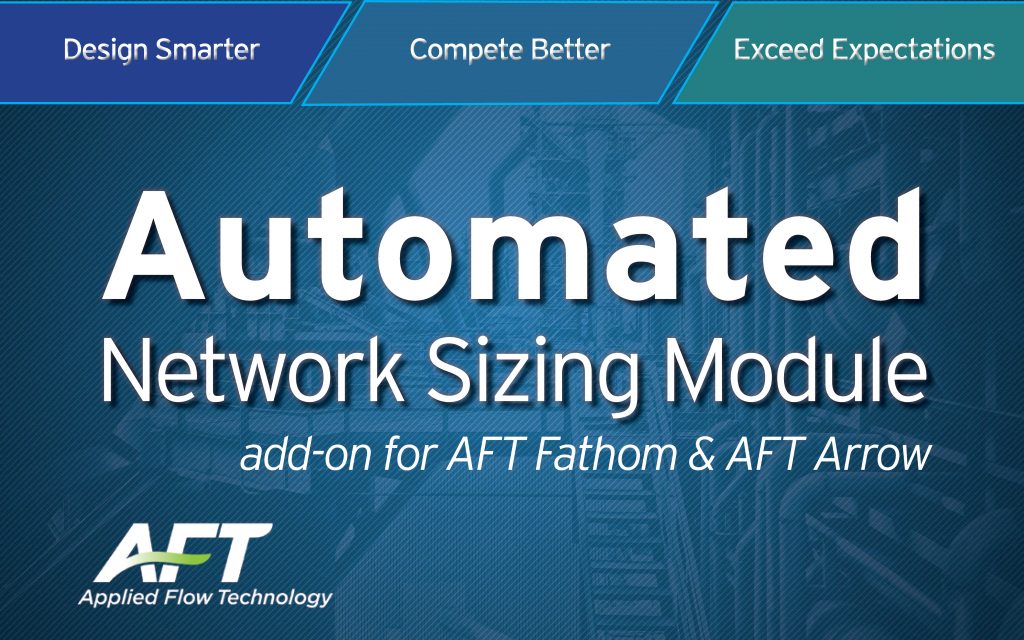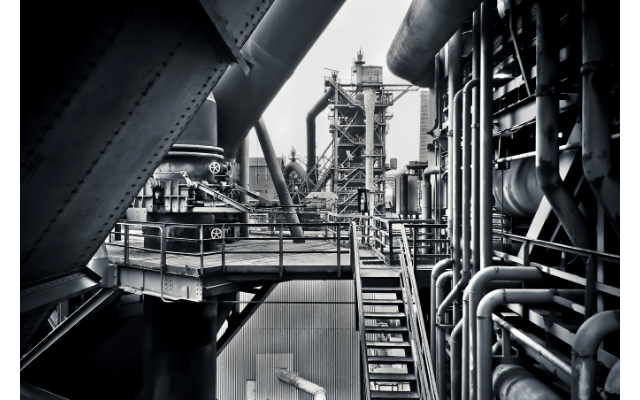The first question to ask yourself is: do I want to minimize my system’s energy usage OR do I want to out-bid competitors on initial system cost? Unfortunately, sometimes we can’t have it all… but Applied Flow Technology (AFT) is doing their best to help engineers meet these goals.
The Automated Network Sizing (ANS) add-on module can be used with AFT Fathom (incompressible flow) or AFT Arrow (compressible flow) to create 10-15% reductions in system costs in whichever path you choose.
 Engineers use the ANS module to:
Engineers use the ANS module to:
- Size piping networks as an integrated system to find better design combinations, all while maintaining user-defined design requirements.
- Smartly manage iterations and comparison of more design concepts to avoid deadline driven compromise.
- Use design cases to size an initial system while anticipating different operating conditions or the increased flow requirements of future expansions.
- Perform economic analysis without opening another program. Account for interest rates and variable costs over time to determine a project’s life-cycle profitability.
Who Can Use This Technology?
Simply put, any engineer who designs new systems or system expansions for any piping or ducting network can use the ANS module.
When designing a system, engineers have to meet customer design requirements, follow industry standards, and maintain effective system operation (and more) within the short design phase time frame. The ANS module is primarily a pipe sizing service in that it is able to find the minimum size of pipe to meet all of these design requirements throughout the entire system. At the same time, these pipes can be sized to minimize initial cost or justify a slight increase for lifecycle savings.
The ANS module finds this optimal pipe size by managing thousands of slight design deviations to find an improved design with little additional input. Not only does the ANS module consider pipe sizes, it can consider all facets of your system during the sizing process to create one holistic solution. This solution will meet all your design requirements at the lowest cost with only a little extra effort.
In pumping systems, increasing pump efficiency with the ANS module has several benefits. For one, the overall operating costs will be lower for the system as more energy is put into the fluid rather than wasted on heat or vibration. By avoiding this wasted energy, the pump becomes more reliable, experiencing less downtime and costs for pump maintenance. With improved reliability and efficiency, the lifetime of the pump can be increased due to reduced stress on the pump.
For gas systems, similar benefits can be found when sizing systems with compressors which similarly require large amounts of energy. Operating the compressor outside of the region specified by the manufacturer can have detrimental effects on the compressor and piping due to excessive heating, pressures, and vibration. This can be accounted for within the ANS module.
It is also common for networks to be run in different operating configurations, whether it be due to varying seasons, customer demands, or external operating conditions. In that case it is sometimes difficult to determine which configuration should be used as a basis for sizing. Engineers who use the ANS module have the ability to size a single system which will meet the design requirements of each unique configuration.
For example, consider a water supply system where it would be necessary consider both the normal operating conditions supplying residential homes as well as surge conditions during a fire. While not the primary or majority configuration of the system, this surge system requirements may require larger pipes to meet the demand at the fire hydrants. Check out this Dependent Design Cases blog for more information on how this can be done with the ANS module.
How does it work?
With any AFT Fathom or AFT Arrow model, you can follow the path of the Sizing Navigation Panel to enter your objective and requirements. Run the scenario and the ANS module will automatically size your pipes, pumps, valves, compressors or fans as an integrated system.
Yes, using the ANS module is an additional step, however it is a minimal step that returns maximum results for engineers and their EPC firm or plant owners. The Sizing Navigation Panel will walk you through entering:
- Sizing Objective: Select whether to minimize weight, volume or cost (this will determine your navigation path)
- Size Assignments: Identify individual pipes, or common groups of pipes to be sized
- Candidate Sets: Choose the range of allowable pipe sizes
- Design Requirements: Input and apply design requirements to the appropriate pipes and junctions
- Assign Cost Databases: (optional) For cost-based sizing, select the cost data for the piping and equipment
- Sizing Method: Select an algorithm to use, or just follow the default choices
- Dependent Design Cases: Select multiple operating cases you would like to include in the sizing
At the completion of the analysis you will be able to confidently justify an increased initial investment for long term energy savings, reducing total cost over the system’s lifecycle; or easily demonstrate the potential savings gained while automatically sizing an initial system and accounting for planned, future expansions.

The ANS module intelligently sized the pipes of this cooling tower system to reduce the total pipe weight by 17% while enforcing common pipe groups such as in the Pump Station and the Risers. As a result, initial monetary cost was reduced by 6%. Design requirements, such as the minimum flowrates through the heat exchangers, were also maintained during sizing.
Which path would you choose to use the Automated Network Sizing module for? For a free trial license, or a live demonstration, contact info@aft.com.
It’s not $829 Anymore, But After 26 years, AFT Fathom is Still Leading the Way




